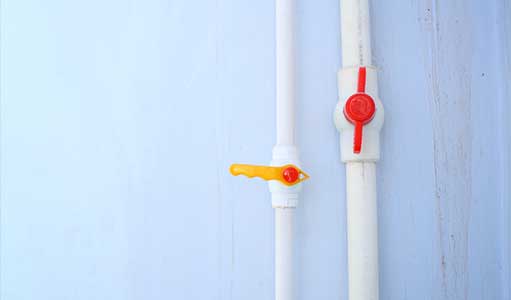Key Word: Taili Plastic Machinery; Taili Plastic Machinery-Capacity Improving Expert; Efficient; Stable; Domestic Water Pipe Joints
More than 80% of household products have plastic components. Some plastic household products are relatively simple to produce, such as brooms, washbasins, etc., while some others are relatively professional. Household injection water pipe joint is a big problem for beginners and the most difficult part is to pass the pressure test.
Mr. Yu of Suzhou is a young and promising businessman. At the age of 30, he has occupied a large supply market of domestic water pipe joints. He used to purchase the goods directly from the manufacturer, but in recent years, the profit margin is getting lower and lower, and the quality of the supply is getting worse and worse. He always receives complaints from customers, such as substandard use time, easily yellowing, too fragile and so on. Mr. Yu decided to manufacture by himself. However, he encountered a big problem. His product always failed in the pressure test, and the water leakage always exists.

Taili Plastic Machinery was invited to inspect in his factory and found the following problems at last:
1. Wrong material selection
This problem is the simplest one. Generally, PVC and PPR are used for drainage pipe fittings. Generally, PVC generally refers to rigid PVC, but it is easy to decompose when heated, and it is easy to produce toxic gases. Generally, the using temperature is below 55 Ōäā. This kind of PVC is commonly used in the production of rainwater downpipes, wire pipes and drainage pipes. Because of its unique nature, generally no pressure test environment is required. But Yu's factory is still testing the PVC jointŌĆÖs pressure. It can be seen that he made a fundamental mistake.
At present, PPR is commonly used as water supply and drainage joint, which has good flexibility, the good feature of un-decomposition in high temperature, long durability. Thus, it can easily pass the pressure test.
2. High barrel temperature
The barrel temperature is as high as 230 Ōäā, and the product turns yellow seriously. Generally, the molding temperature of PVC products is between 180-210 Ōäā, and the thermal conductivity of PVC is poor and the thermal inertia is large. The yellowing phenomenon is mostly caused by the excessive shear force inside the fluid. Generally, in the process of material storage, attention should be paid to adjusting the back pressure, screw speed, injection speed, pressure and other parameters to prevent the yellowing of products. The physical properties of yellowing PVC are very poor, and the service life of product made will be greatly reduced.
3. Small mold feeding port
Generally, the mold feeding port of PVC parts should be enlarged appropriately. Because in the process of injection, too small mold feeding port is easy to form a larger impact stress, which increases the internal pressure of PVC parts, resulting in the weakening of pressure resistance of products and the product will easily get brittle.
For PPR pipe fittings, under the condition that the product meets the requirements, the mold feeding port should be enlarged as much as possible, which is conducive to the transmission of pressure, convenient to lower the injection temperature, reduce the injection pressure, and ensure the quality of products.
After the three steps of inspection above, Mr YuŌĆÖs problem was finally solved.
Taili Plastic Machinery always keeps in mind that what a good injection molding machine factory should do is to help improving the capacity and boosting the profits, rather than offer the similar products the customers need. This is also what Taili Plastic Machinery keeps doing.
Follow Taili Plastic Machinery and we will share more with you. |

 China
China
 China
China